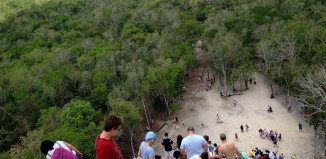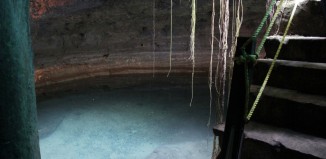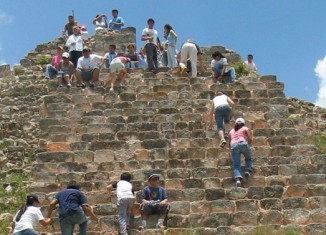Valladolid
Valladolid features a mix of colonial air, magical buildings and a little of ourselves
Known as “the Pearl of the East,” Valladolid is a colonial city with the feel of a traditional Yucatan village. This historic place is a symbol of beauty and magic, as it proudly displays the architecture gifted to Yucatan by the Spanish conquerors. Come and see for yourself what nature has to offer in its many cenotes, a highlight of the area. Let yourself be pampered by the spirit of its people; taste the delicious dishes offered in this city, carefully prepared in the traditional Valladolid way; and take a unique souvenir with you, with one of the many local handicrafts.
Romantic alleyways and neighborhoods with ancient buildings greet visitors in Valladolid, a quiet and majestic colonial city. Founded in 1534 by the Spanish, the old Mayan city of Zací (pronounced zah-kee) became the colonization center for the entire eastern region of the Yucatan peninsula. Nowadays, Valladolid is an important center for tourists looking for adventure, culture or just plain fun. With hotels, recreational centers and its legendary regional cuisine, you can base yourself in Valladolid to explore other colonial spots like Izamal or Uayma, beaches like Rio Lagartos or San Felipe, archeological sites like Coba, Ek Balam or Chichen Itza, and beautiful cenotes like X’Keken in Dzitnup or the breathtaking Zací cenote, located right in the center of the city. You shouldn’t miss it!
Entrance to most cenotes is 30 pesos.
How to get there
Valladolid is in the eastern tip of the state of Yucatan, 160 km (100 mi) from Merida. By car from Merida, take Calle 59 until the city beltway, called Periférico, where you’ll see signs for Valladolid, Chichen Itza and Cancun, as they’re all connected by the same road. When you get to Kantunil you’ll have the option to take the highway (2 hours to Valladolid) or the faster toll road (1.5 hours). By bus, the station is called CAME (pronounced kah-may), and it’s on Calle 70 with 71 in Merida Centro. Buses run at 6:00, 6:30, 7:40, 8:00, 9:15, 9:40, 10:40 and 11:00 am, and 12:40, 3:55, 5:45 and 7:30 pm. The bus fare is 128 pesos, and it takes about 2 hours 20 minutes.
Schedule
Cenotes are open 9:00 am to 4:00 pm.
Suggestions and Information
Plan to bring comfortable clothes and shoes to explore the streets and colonial sites in Valladolid. You should also bring your bathing suit if you intend to swim in the cenotes. A camera will allow you to capture and bring home all the colonial sites you can visit, as well as the beauty of the surrounding cenotes. To make the most of your stay, try visiting Valladolid on the following dates: February 2, Candlemas Day, or the Christian Festival of Lights; June 3 and 4, the celebration of the anniversary of the first revolutionary spark in Mexico, which took place in Valladolid; November 1 and 2, Hanal Pixan, the Mayan celebration of the Day of the Dead. Remember, it’s important to respect the area you’re visiting and keep it clean.







